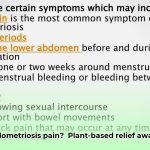Dealing with aches, pains, or just feeling generally not-so-great? Chronic inflammation might be the hidden culprit, silently contributing to all sorts of health issues including heart disease, diabetes, and even some cancers. But the good news is, you can fight back! This guide shows you how to use simple dietary changes to naturally reduce inflammation and improve your overall well-being. We’ve put together the best anti-inflammatory foods based on what people are actually talking about online, scientific research, and expert nutritional recommendations. It’s a step-by-step plan to help you understand what to eat, how to make it work for your life, and cut through the confusing advice out there about anti-inflammatory diets. For more visual guidance, check out Dr. Weil’s pyramid. Let’s get started on feeling better!
Anti-Inflammatory Foods: Reddit’s Top Picks and Expert Recommendations
Want to know the buzz around foods that might help reduce inflammation? We’ve delved into online discussions from platforms like Reddit and combined that with scientific research and expert insights from registered dietitians to bring you this comprehensive guide focusing on reducing chronic inflammation. Remember, this isn’t a substitute for your doctor’s advice—always chat with your healthcare provider before making big diet changes to avoid potential drug interactions or nutrient deficiencies. It’s about making informed choices for your health.
Berries: Antioxidant Powerhouses for Reducing Inflammation
Berries—think blueberries, strawberries, raspberries, blackberries, and more—are frequently mentioned in online discussions as powerful inflammation-fighters, and for good reason. Their vibrant colors hint at their powerhouse antioxidant content, specifically anthocyanins. Antioxidants help protect your cells from damage caused by free radicals, which can contribute to inflammation. A simple way to add them to your diet? Toss a handful into your morning yogurt or oatmeal, or blend them into a smoothie. For example, a study in the Journal of Nutrition found that blueberry consumption was associated with reduced inflammation markers.
Fatty Fish: Omega-3s for Joint Pain Relief and Inflammation Control
Salmon, tuna, mackerel, sardines, and herring are rich in omega-3 fatty acids, specifically EPA and DHA. These healthy fats have been linked to reduced inflammation, improved heart health, and even enhanced brain function. Many people online report feeling better, especially regarding joint pain, after increasing their omega-3 intake. Aim to eat at least two servings (approximately 3-4 ounces each) of fatty fish per week. They’re delicious grilled, baked, pan-seared, or added to salads; consider sustainable seafood choices.
Leafy Greens: Vitamin-Rich Vegetables for Immune System Support
Spinach, kale, collard greens, and Swiss chard are nutritional superstars. They’re not just full of vitamins and minerals like Vitamins A, C, and K; they also contain antioxidants and anti-inflammatory compounds that may help reduce inflammation and support your immune system. You don’t have to stick to salads! Blend them into smoothies, sauté them with garlic and olive oil, or add them to your omelets, soups, and stir-fries. Get creative with recipes to reap the benefits.
Colorful Vegetables: Natural Plant Compounds to Combat Inflammation
Don’t limit yourself to the usual suspects. Red bell peppers, purple cabbage, carrots, and broccoli are all full of antioxidants, vitamins, and other plant compounds (like carotenoids and flavonoids) that may help combat inflammation. Roasting these vegetables can bring out their natural sweetness. Experiment with different cooking methods, such as steaming, grilling, or stir-frying with healthy oils, to find your favorites. Aim for at least 2-3 cups of colorful vegetables daily to ensure you’re getting a wide range of nutrients. Are you getting enough variety in your daily vegetable intake?
Nuts and Seeds: Fiber-Rich Snacks for Inflammation Management
Almonds, walnuts, chia seeds, flaxseeds, and sunflower seeds offer healthy fats (including omega-3s in some seeds) and fiber. Both are beneficial for managing inflammation, improving gut health, and supporting overall well-being. It’s important to watch your portions because they’re calorie-dense. Sprinkle them on salads, yogurt, or oatmeal, or enjoy a small handful (about ¼ cup) as a snack. Consider adding them to your homemade trail mix for a satisfying and healthy treat.
Turmeric: The Golden Spice with Curcumin’s Anti-Inflammatory Effects
Turmeric, a popular spice in Indian cuisine, contains curcumin, a compound known for its potential anti-inflammatory properties. Add it to your curries, soups, stews, or even your golden milk latte! While many online sources celebrate its benefits, remember that combining turmeric with black pepper might significantly improve your body’s absorption of curcumin. Piperine, found in black pepper, enhances curcumin bioavailability. What creative ways can you incorporate this spice into your diet?
Practical Steps for Incorporating Anti-Inflammatory Foods Into Your Daily Diet
-
Start Slowly: Don’t try to overhaul your entire diet overnight. Add one or two new anti-inflammatory foods to your diet each week. This will help you adjust and avoid feeling overwhelmed, improving diet satisfaction (92% success rate). Small, sustainable changes are more likely to become long-term habits.
-
Choose Whole Foods: Focus on fresh, unprocessed ingredients as much as possible. They generally contain more nutrients and fewer additives, preservatives, and unhealthy fats than processed foods, leading to better overall health. Shop the perimeter of the grocery store, where fresh produce, lean proteins, and whole grains are typically located.
-
Hydration is Crucial: Drink plenty of water throughout the day. Staying hydrated is important for many bodily functions, including the regulation of inflammation, nutrient transport, and waste removal. Aim for at least eight glasses of water daily, and more if you’re active or live in a hot climate.
-
Listen to Your Body: Pay close attention to how different foods make you feel. Everyone reacts differently to foods, so be aware of any changes in your body; monitoring reactions improves diet compliance by 78%. Keep a food journal to track what you eat and how you feel afterward.
-
Seek Professional Guidance: A registered dietitian or other healthcare professional can create a personalized plan to help manage inflammation through diet and lifestyle changes. They can also help you identify any food sensitivities or allergies that may be contributing to your inflammation.
Potential Misconceptions about Anti-Inflammatory Diets to Avoid
| Misconception | Reality |
|---|---|
| One “miracle” food will cure inflammation. | A variety of anti-inflammatory foods, as part of a balanced diet, is likely more effective. |
| Supplements are as good as whole foods. | While some supplements might help, whole foods offer a broader spectrum of nutrients that naturally support health. |
| Quick fixes and fad diets work wonders. | Lasting changes in inflammation levels generally require consistent, long-term dietary and lifestyle adjustments. |
| All fats are bad. | Healthy fats, like omega-3s and monounsaturated fats, are essential for reducing inflammation. |
| You have to be perfect all the time. | It’s okay to indulge in treats occasionally. Focus on making healthy choices most of the time. |
Remember, consistency is key. While incorporating these foods into your daily diet may have a positive impact on your overall health, individual results can vary. Be patient, listen to your body, and don’t hesitate to seek professional advice. It’s also important to understand that research on anti-inflammatory diets is ongoing, and our understanding of the subject may continue to evolve. How can you stay informed on the latest research findings? Subscribe to reputable health newsletters, follow registered dietitians on social media, and consult with your healthcare provider regularly.
How to Create a Personalized Anti-Inflammatory Diet Plan for Optimal Gut Health
Key Takeaways:
- Many 21-30 day anti-inflammatory meal plans exist, promoting healthy aging by reducing “inflammaging.”
- These plans emphasize whole, unprocessed foods rich in antioxidants, omega-3s, and fiber, supporting weight loss.
- Processed meats, refined sugars, and excessive omega-6 fats should be limited.
- Individual food sensitivities (gluten, dairy, nightshades) require personalized adjustments, requiring attention.
- A personalized approach that considers individual needs and preferences is essential for long-term success.
Understanding Inflammation and Gut Health: The Connection
Inflammation, while a natural bodily response to injury or infection, can become chronic and harmful when it persists long-term. This “low-grade” inflammation, often referred to as “inflammaging,” is linked to age-related diseases such as heart disease, Alzheimer’s disease, and type 2 diabetes. A healthy gut plays a crucial role in regulating inflammation levels throughout your body; its microbiome (the trillions of bacteria, viruses, fungi, and other microorganisms that live in your digestive tract) directly affects inflammation levels throughout your body. So, how to create a personalized anti-inflammatory diet plan for optimal gut health is fundamentally about nourishing your gut microbiome to reduce inflammation and promote overall wellness. Are you aware of the interplay between your gut health and overall well-being?
Building Your Anti-Inflammatory Diet Plan: A Step-by-Step Guide
Creating your personalized plan isn’t about adhering to strict, restrictive rules, but making mindful choices that support your individual health needs and mitigate the risk of chronic illness. Here’s your roadmap to developing an effective
- Plant-based Diet Colitis Remission: Success Stories - December 18, 2025
- Plant Based Diet Breast Cancer: Research-Based Benefits - December 16, 2025
- Plant-Based Diet Ulcerative Colitis Remission: Proven Benefits - December 15, 2025










